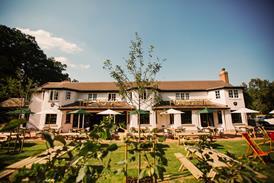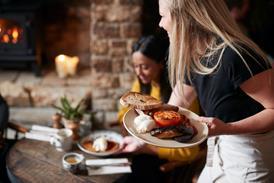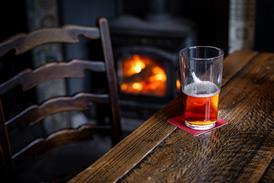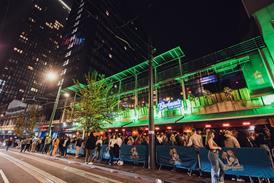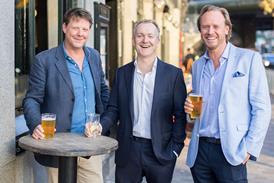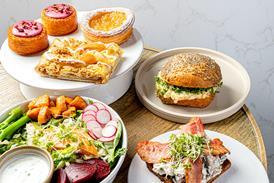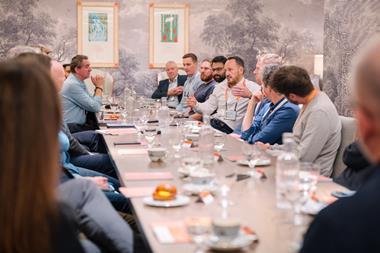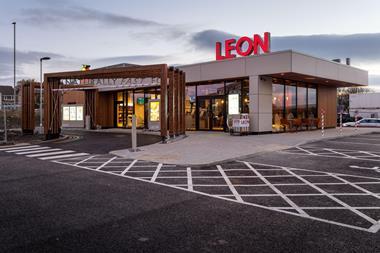Shaftesbury is known for its forward-thinking approach to leasing, which has helped maintain the West End as a dynamic place to eat out. Julia Wilkinson discusses this pioneering approach, food and drink trends across the portfolio, and the evolution of Chinatown into a diverse Pan Asian offer with Finn Scott-Delany
Contemporary developments in London, like Bloomberg Arcade, Battersea Power Station and Victoria Nova, are known for their carefully curated selection of restaurant operators, whose up-and-coming boutique concepts are signed up to deliver statements of intent about the scheme.
With such developments sometimes taking years to come online, reading the tea leaves to predict the trends of the future is fraught with danger even for the best leasing directors.
But it is a practice that has been turned into something of an art form by Shaftesbury, the West End landlord that has had more influence than most in shaping what is eaten in the capital’s dining hot spots.
In the Carnaby area of Soho alone, Shaftesbury has 59 restaurants and bars, covering 111,000sq ft, and including a who’s who of hip brands, such as Bao, Bone Daddies and Dirty Bones, as well as the 21-strong alfresco dining experience Kingly Court.
Covent Garden is home to Hawksmoor, Rosa’s Thai Café and Shake Shack; and then there is Chinatown, the c100-strong food hub that is evolving from an Anglicised relic of Cantonese immigration, to a more diverse Pan Asian offering.
According to Shaftesbury head of rest-aurants Julia Wilkinson, the listed company has a long-held philosophy to be ahead of the curve when it comes to trends and, despite the risks, is rarely proved wrong.
“It’s part and parcel of our philosophy to be forward-thinking – to try new things, to take risks,” she says. “Sometimes it doesn’t work, but that’s no reason not to take a risk and try a concept with potential. We don’t have many failures. When it doesn’t work we usually have an alternative choice to take their place.”
So what is Shaftesbury looking for in an operator? How do fledgling concepts get on the radar of the West End’s biggest leisure landlord.
“We are looking for a distinct concept, something we don’t have, and something that has already been tested to a certain extent,” she says.
“We like operators to have had some experience proving the concept, in pop-ups, markets, supper clubs. There needs to be a record of accomplishment, with a good team and a plan for fit out and service.
“Ultimately, it comes down to instinct and if it’s somewhere we would like to eat – as we are the customers as well.”
Shaftesbury takes a nurturing approach to these fledgling operators, helping them through the letting stage and forging a close working relationship, Wilkinson said.
The group is also involved in the micro managing of the restaurant villages, providing security, street cleaning and support, as part of a “complicated eco-system”.
Comeback of the wet-led sites
With a fixed supply of restaurants, Wilkinson sees opportunities to reassigning leases to historic wet-led sites, which have more recently become restaurants.
For example, 6 Rathbone Place, historically the Black Horse pub, was converted to a restaurant by Byron, but restored to bar use and let to AvroKo to trade under its Genuine all-day café-bar brand.
Likewise, 48 Newman Street, formerly
the Cambridge Arms, was converted to a restaurant by a Ping Pong, but more recently traded as The Newman Street
Tavern and then Dickie Fitz. Shaftesbury restored the A4 use and the lease has now been assigned to Inception Group for Mr Fogg’s House of Botanicals.
“There is always demand from bar operators, there’s never enough sites,” she says.
Meanwhile, Wilkinson has noted strong growth in A1 retail sites, such as speciality coffee shops, and new quality grab-and-go offerings.
“We are seeing a lot of creativity on the A1 retail side, with coffee operators, and bakeries a huge growth area,” she says.
“Poke is massive, and particularly relevant and successful in the West End, where workers are looking for something healthy and fast. It appeals to men as well as women, is colourful and Instagrammable, and doesn’t need a restaurant extraction system. Coffee is a bedrock, and with chains shrinking their portfolios in the West End, that’s creating opportunities for independents.”
Despite its huge growth, Wilkinson said delivery is less of a factor in the West End, though click and collect at grab-and-go operators is a growing trend.
“We are seeing less demand from Uber Eats and Deliveroo in the West End, as people like going to eat in these restaurants for ambience and experience.
“But click and collect, with that convenience, technology and speed of service is a growth area.”
Meanwhile, pubs with an undeveloped food offer are giving small operators their first taste of bricks and mortar, with Claw doing its first pop-up in Soho before securing a permanent location.
“It allows them to hone their concept and gives us confidence when they sign a lease.”
While the villages of Soho, Covent Garden and Fitzrovia have a certain sty-listic continuity, the odd one out would be Chinatown.
Central London starting change
The vibrant district succeeded Limehouse as the de facto epicentre of the Chinese community in the late 1960s, with Cantonese traders finding a market from WW2 veterens who had acquired a taste for exotic cuisine.
Yet it also suffered from a reputation for being overwhelming and difficult to navigate – a perception Shaftesbury is on a mission to change through more effective communication, as well as carefully developing and diversifying the offer.
“In the past five years, Chinatown has started to change, the mix has changed slightly. Our philosophy remains respectful to a Chinatown predominantly made up of Chinese restaurants,” Wilkinson says.
“We’re seeing an appetite for more regional cuisine, from a new audience, with new operators coming in. Also existing operators are doing slightly different things, looking to their roots in mainland China.”
At the cutting edge of this cultural shift is the likes of Xu, the contemporary Taiwanese concept from the founders of Bao and backed by the Sethi family, finding a home on the edge of Chinatown in Rupert Street.
Tuk Shop, the new Thai concept from Leon, has opened its debut site on Shaftesbury Avenue, while Japanese burger and udon concept Ichibuns chose Wardour Street for its London launch.
Elsewhere long-standing restaurants like Plum Valley are seeing a younger generation take the reins and give a fresh, more contemporary perspective on dim sum.
And a new generation of middle class arrivals are also driving innovation in A1 dessert parlours, with sweet pudding specialist Guo C 100, Japanese matcha tea brand Tsujiri, and wildly hip newcomer Roro, all taking positions in the recently redeveloped Newport Court.
“The changes are happening through a mix of operators wanting to be in Chinatown, and tap into that warmth and energy, and also the existing customs base of Chinese customers coming to Chinatown – whether residents, tourists or students,” Wilkinson said.
“Then there’s the foodie crowd, who are rediscovering it – not just coming in to see new operators, but because of better communications through social media, exploring what’s already there. There’s a fanatic bedrock of operators.” As well as marketing by the popular social media channels, Shaftesbury also markets on the key Chinese platforms WeChat and Weibo.
Moving beyond the district’s traditional Cantonese cuisine, Vietnamese, Filipino, Thai, Szechuan and northern Chinese styles are finding a place in the area.
Wilkinson says this is about trying to create a more diverse offer amid more adventurous tastes – while staying true to its accessible and affordable roots.
“Our vision in terms of the mix is to showcase all the different regions within China, and layer on Pan Asian operators and dessert bars as well,” she explains.
“If you go to Kingly Court, you get operators from all over the world, and we’d like to see a Chinese/Asian version of that in Chinatown, and give people more choice.
“With the size of the area, there is scope to diversify more.”










